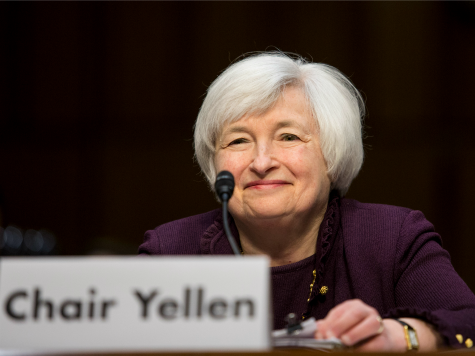
Federal Reserve Chairwoman Janet Yellen offered an upbeat economic outlook to the Joint Congressional Economic Committee in her remarks Wednesday by stating, “With the harsh winter behind us, many recent indicators suggest that a rebound in spending and production is already underway, putting the overall economy on track for solid growth in the current quarter.”
This is Fed speak for growth is moving up to 3-4% range, Quantitative Easing will end this year, and inflation may become a problem.
Here is my interpretation of Chair Yellen’s presentation:
- Payroll employment is growing at 200,000 jobs per month and the nation is about half way toward recovering the 10 million jobs lost over the last five years;
- Inflation has been low because Chinese and Asian exporters have been cutting prices to retain market share against growing U.S. competition. The Fed believes new housing demand has been weaker than expected, but expects that the tax incentives will strengthen new construction as employment expands;
- “Looking ahead,” the Fed expects the expanding U.S. economy will drive inflation above the Fed’s 2% target. The Fed’s monetary policy that drove much of the early economic gains is too loose right now;
- Quantitative Easing asset purchases since September 2012 were appropriate to make sure the economy did not suffer a double-dip recession, but by December 2013 the substantial improvement in labor markets and the “broad economy” make this activity inappropriate;
- The Zero Interest Rate Policy that kept the rate the Fed charges banks to borrow at 0% is officially over as of April. The Fed will be modestly moving the short term rate up later this year.
Chairwoman Yellen emphasized the Fed “recognizes that an extended period of low interest rates has the potential to induce investors to ‘reach for yield’ by taking on increased leverage, duration risk, or credit risk.” Consequently, the Fed will be moving to rein in bank participation in this activity and slam the breaks on “junk bond” sales.
The Fed does not believe that the stock and residential real estate prices are in bubble territory yet. After completing the Fed’s Dodd-Frank Act stress tests, the Fed believes that the deleveraging of bank lending from about 25 times deposits before the recession to 13 times deposits today means that banks and brokers can manage any significant market crash.
Regardless, the Fed has “finalized a rule implementing section 165 of the Dodd-Frank Act to establish enhanced prudential standards for large banking firms in the form of risk-based and leverage capital, liquidity, and risk-management requirements” to make sure the too-big-to-fail banks do not build up shadow banking activities that could create another financial crisis.
Chairwoman Yellen concluded her remarks by seeking to reassure the American people that the Fed is returning to a more conservative monetary policy:
While we have seen substantial improvements in labor market conditions and the overall economy since the financial crisis and severe recession, we recognize that more must be accomplished. Many Americans who want a job are still unemployed, inflation continues to run below the FOMC’s longer-run objective, and work remains to further strengthen our financial system. I will continue to work closely with my colleagues and others to carry out the important mission that the Congress has given the Federal Reserve.
The author welcomes feedback and will respond to comments by readers.

COMMENTS
Please let us know if you're having issues with commenting.